Diotto
Het DIOTTO-project heeft als doel alleenwonende senioren langer zelfstandig en kwaliteitsvol thuis te laten wonen. Dit door hen te ondersteunen en te activeren in hun dagelijkse leven en door het creëren van een gevoel van gerustheid bij de mantelzorgers.
Net daarom lag de focus van het project op het conceptualiseren en ontwikkelen van Internet of Things diensten die vertrekken vanuit de context van de senior.
- Zorgproeftuin AIPA
- Aalst
- Sensolus, Studio Dott, Waylay
Ontwerpgedreven onderzoek
Te vaak moeten we vaststellen dat technologische producten op de seniorenmarkt zeer technologiegedreven zijn ontwikkeld. Dit willen we veranderen, en daarom zetten we binnen dit zorgproeftuinproject de sociaal-maatschappelijke context voorop. We streven naar een voor de senior relevant product en/of dienst waarbij technologie gebruikt wordt om senioren en hun sociale kring(en) te ondersteunen.
Dankzij de zorgproeftuin AIPA konden we de impact van mogelijke oplossingen uitgebreid en stapsgewijs onderzoeken. Het uiteindelijke resultaat hiervan, ÇAVA, is een werkend prototype dat getest werd binnen 7 families.
Contextuele analyse
Een cultural probe werd verdeeld over 50 senioren met zeer diverse achtergronden. Bij een selectie ervan werd een interview gedaan om diepere inzicht te krijgen in de sociale kring, de relatie tot technologie en het belang van fysieke producten bij deze doelgroep.
Op deze manier wisten we als ontwerpteam welke waarden van belang waren en werden zo vertaald in tastbare persona's.
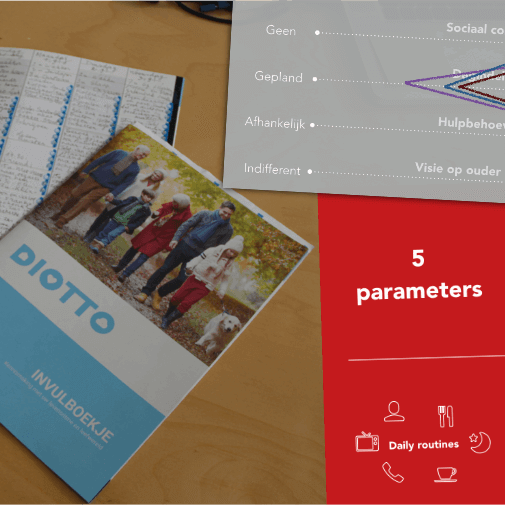
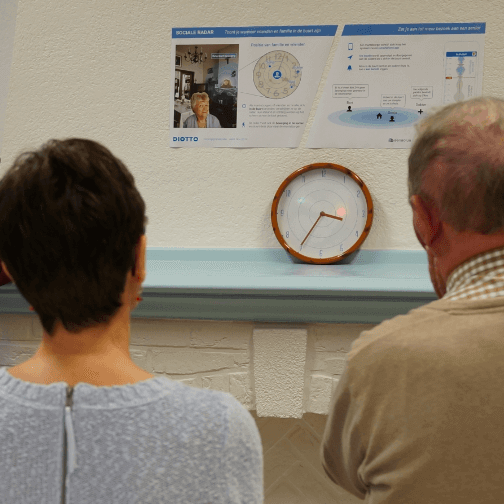
Mixed fidelity prototyping
Verschillende cocreatiemomenten met verschillende stakeholders werden opgezet. Er werd gebruik gemaakt van 'mixed fidelity prototypes' of prototypes die de illusie wekken dat ze functioneel zijn, terwijl het meteen ook duidelijk is dat het geheel nog in ontwikkeling is. Door deze manier van visualiseren werd het voor de betrokken doelgroepen meteen duidelijk welke concepten we voor ogen hadden.
Interactieontwerp
Op basis van inzichten uit de cocreatiesessies met eindgebruikers en experten, werd de richting van het projectresultaat steeds duidelijker: een zowel digitale als fysieke interactie met het product bleek essentieel.
Dankzij de diverse en brede expertise binnen het team kon dit vertaald worden in zeer tastbare, 'hybride' wireframes en interactieconcepten.
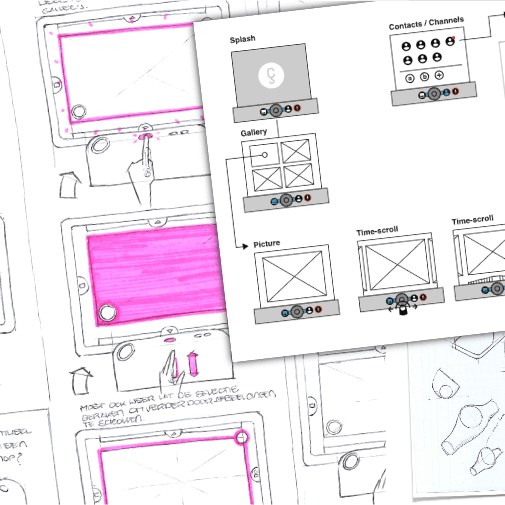
ÇAVA
ÇAVA is het resultaat van onderzoeksproject DIOTTO. Het product is een manier om in een steeds digitalere wereld senioren niet uit het oog te verliezen. Via het delen van foto's en activiteiten tussen senior en familie/mantelzorger creëren we een sociaal ondersteunend systeem op een niet-intrusieve manier.
ÇAVA bestaat uit 3 complementaire componenten:
- Digitaal fotokader
- Tijdlijn met dagelijkse routines en activiteiten
- Sensoren
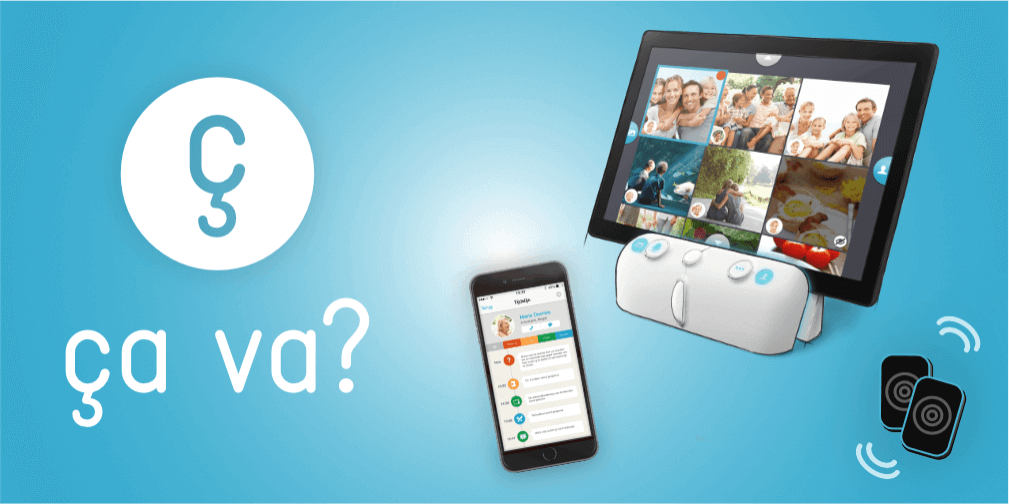
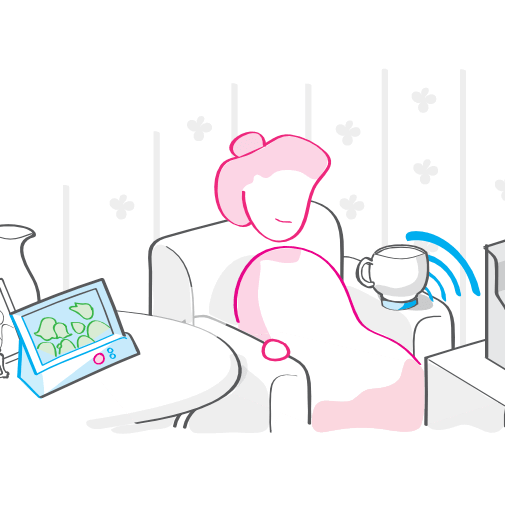
Senior
Met ÇAVA kan oma of opa inpikken op sociale kanalen waar ze voorheen moeilijk toegang toe had. Via het digitale fotokader ontvangen ze geregeld foto’s en berichten van familie en vrienden waarop ze vervolgens kunnen reageren.
In combinatie met strategisch geplaatste sensoren op dagelijks gebruikte objecten of op specifieke plaatsen krijgt de familie een beeld van de dagelijkse routine en eventuele afwijkingen. Dit creëert een gevoel van veiligheid zonder privacy op te geven.
Familie & mantelzorgers
Oma of opa kan helaas niet altijd mee op familieuitstap, maar via ÇAVA worden vaak foto’s doorgestuurd. Zo zijn ze er altijd een beetje bij. Bovendien hoeft de familie zich geen onnodige zorgen te maken, want dankzij degeregistreerde sensordata en de activiteit op het digitale fotokader weten ze dat alles ok is!
Mocht er toch iets niet in orde lijken of afwijken van de dagelijkse routine, dan weten ze dat ze hier meteen melding van krijgen.
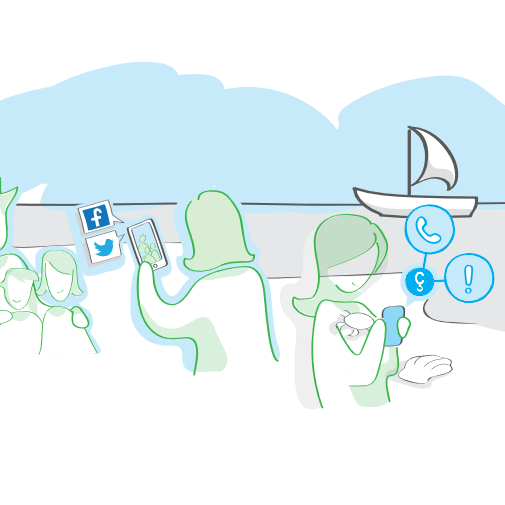
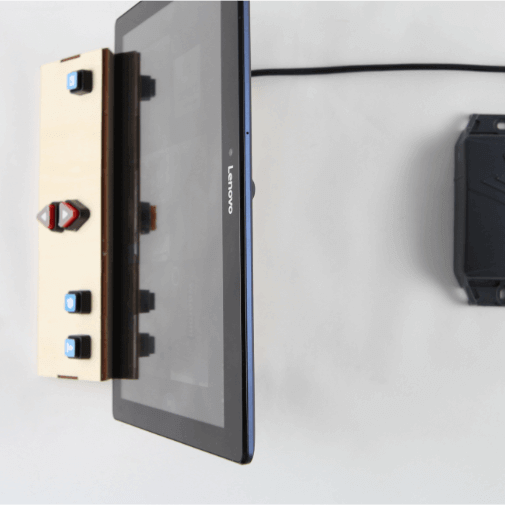
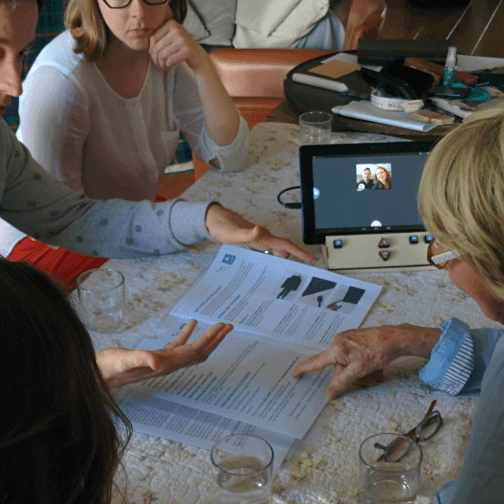
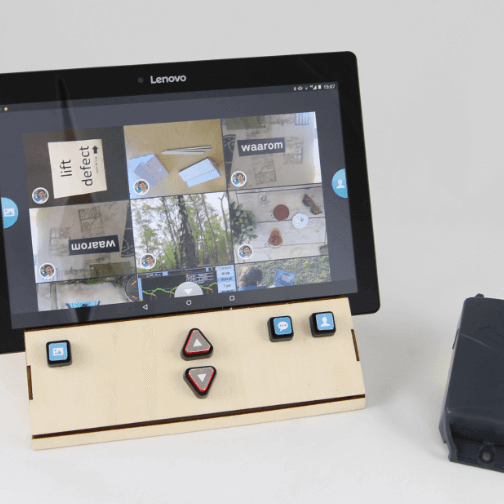
Diotto – IOT goes social
The DIOTTO-project aims to allow elderly persons living alone to retain an independent and high-quality life in their own home for longer. This is achieved by supporting and activating them in their day-to-day lives and creating peace of mind among the informal carers.
That is why this project focuses on conceptualizing and developing Internet of Things services that are based on the actual context that the elderly live in.
- Zorgproeftuin AIPA
- Aalst
- Sensolus, Studio Dott, Waylay
Design-driven research
All too often, we find that technological products for the elderly are developed in a very technology-driven way. We want to change this, and that’s why in this Care Living Lab project we’re prioritizing the social context. We’re aiming for a product and/or service that is relevant to the senior, using technology to support the elderly and their social circles.
Thanks to the Care Living Lab AIPA, we were able to research the impact of various possible solutions in an elaborate and gradual way. The final result of this, ÇAVA, is a working prototype that was tested with 7 families.
Contextual analysis
In order to get full insight into the entire context, a cultural probe was divided over 50 seniors with very diverse backgrounds. Based on their answers, interviews were done with a selection of seniors to learn more about their social circles, how they relate to technology and the importance of physical products in this target group.
As a design team, we were able to use this analysis to pinpoint which values were most important. This was presented in a tangible way by developing personas and defining the design challenges.


Mixed fidelity prototyping
In order to determine the various functionalities of the final product, we set up multiple cocreation sessions with various stakeholders. During these sessions, we used 'mixed fidelity prototypes', i.e. prototypes that give the illusion of being functional but also clearly show that the product is a work in progress. Using this method of visualizing, the target groups that were involved instantly understood which concepts we were working with.
Interaction design
Based on the insights acquired during the different co-creation sessions, with end users and experts, the direction of the project result became increasingly clear. A conscious choice was made to allow digital as well as physical interaction with the product, meaning we had to take this into account in the development of the concept.
Thanks to the wide and diverse expertise within our team, we were able to create very tangible ‘hybrid’ wireframes and interaction concepts.

ÇAVA
ÇAVA is the result of the DIoTTO research project. The product is a way of keeping in touch with the elderly in an increasingly digital world. By sharing photos and activities between seniors and family/informal carers, we create a social support system in a non-intrusive way.
ÇAVA is made up of 3 complementary components:
- A digital photo frame
- A timeline with daily routines and activities
- Sensors


Senior
Thanks to ÇAVA, grandma and grandpa can be part of the social networks they previously didn’t have access to. Through the digital photo frame, they regularly receive photos and messages from family and friends, and can respond to them.
Combined with sensors strategically placed on objects that are used on a daily basis or in specific places, the family can follow up on the daily routine and any abnormalities. This creates a sense of security, without invading the elderly’s privacy.
Family & informal carers
Unfortunately, grandma or grandpa can’t always join every family outing, but with ÇAVA photos can be shared regularly. This way, they’re also part of the fun. In addition, the family doesn’t have to worry because thanks to the registered sensor data and activity on the digital photo frame, they know everything is OK!
Should anything seem out of the ordinary or deviate from the daily routine, they know they’ll instantly receive a notification.





